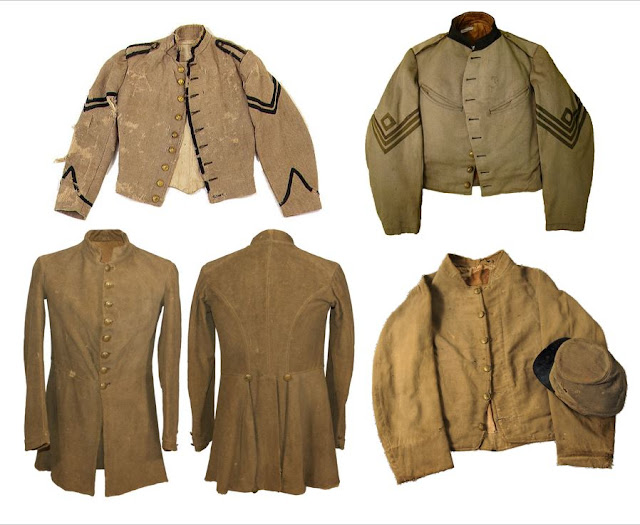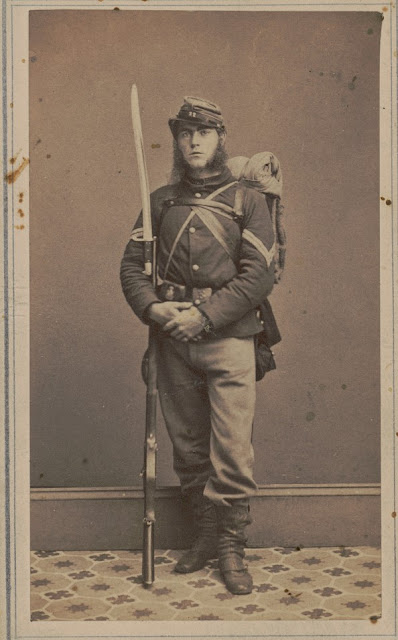Charging the Rutherford County Courthouse
On the morning of July 13, 1862, a cavalry command under Colonel Nathan Bedford Forrest attacked and compelled the surrender of the Federal garrison at Murfreesboro, Tennessee. Among those taking part in the assault was Private John C. Ellington of the 2nd Georgia Cavalry who in this brief letter to his father back home in Jonesboro described how his company, the Clayton Dragoons, took the Rutherford County Courthouse.
“The enemy
kept up a continual crossfire from the windows,” Ellington stated. “We were
ordered to charge on foot. At the first effort, they poured a volley of balls
into our ranks, killing R.S. Henderson and F.M. Farris while severely wounding
D.P. Morris and Robert Payne, all men from the Clayton Dragoons. We got an axe
and charged from another corner and succeeded in reaching the courthouse and
broke down the door. About this time, all of them went to the upper story so we
went in and built a fire. This they could not stand and they surrendered at
once- 56 in number.”
Ellington’s account of the First Battle of Murfreesboro first saw publication in the August 10, 1862, edition of the Atlanta Southern Confederacy.
Dear Father,
At 2 p.m. on the
12th instant, we were ordered to start with two days’ rations but
where to we knew not. At the sound of the bugle, we took up the line, passed
through McMinnville and on towards Murfreesboro. At 1 o’clock at night we arrived
at Woodville [Woodbury], stopped one hour, and then on we went. About the crack
of day, we were halted four miles from Murfreesboro and ordered to load and cap
our guns. All were ready in a few minutes.
From here to
town we went like a thunderstorm, riding almost as fast as our horses could
run. We entered town at good light and were greeted by 1,500 of the enemy. The
ball was opened at once by a company that was in the courthouse. The Texas
Rangers were in front and passed on towards the camp of the enemy. We were
halted and ordered to take the courthouse; this we did though at a dear price.
The enemy kept
up a continual crossfire from the windows. We were ordered to charge on foot.
At the first effort, they poured a volley of balls into our ranks, killing R.S.
Henderson and F.M. Farris while severely wounding D.P. Morris and Robert Payne,
all men from the Clayton Dragoons. We got an axe and charged from another
corner and succeeded in reaching the courthouse and broke down the door. About
this time, all of them went to the upper story so we went in and built a fire.
This they could not stand and they surrendered at once- 56 in number. [This was Co. B of the 9th Michigan Infantry; Bennett's history of the 9th Michigan says that 42 men of the company surrendered, not 56.] We next
arrested General George Crittenden and staff at a private house without firing
a gun. We also arrested a great many others who were scattered over town. I saw
15 men shot down in the courthouse square. We had no artillery or infantry. After
almost five hours, we captured the whole army except a few who scattered off.
We then burnt the depot, some cars, and a large amount of commissary stores. The property taken and destroyed is supposed to be worth $2 million.
The Rutherford County Courthouse survived the war and stands today as the centerpiece of a bustling downtown Murfreesboro, Tennessee. The first floor of the courthouse is open to the public and features a small museum explaining some of the history of the courthouse and of Rutherford County. In 2002 during the restoration of the courthouse, a fired Lorenz bullet was discovered atop one of the columns, possibly a relic from this assault on the courthouse on the morning of July 13, 1862.
Source:
Letter from Private John C. Ellington, Co. F, 2nd
Georgia Cavalry, Atlanta Southern Confederacy (Georgia), August 10,
1862, pg. 2












Comments
Post a Comment